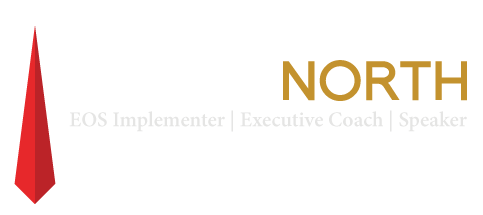For successful entrepreneurs and other business leaders – the bigger the issue the better.
A failed project, initiative, strategy or business is a big issue that can create anger, frustration, disappointment and even depression; it’s also a big opportunity. For successful entrepreneurs and other high-performing leaders, having big issues to solve is a great opportunity.
One of my mentors, Steve Siebold, taught me that the value I bring to a business (as a coach, consultant and speaker) is equal to the size of the problem I can help it solve. It’s one of the most valuable pieces of advice I’ve ever received.
Below is an amazing perspective on the value of big issues to solve from an interview I did with Jeremy Bloom. Jeremy is mentally the strongest person I’ve ever known or talked with (including the Olympic and professional athletes and Inc. 5000 CEOs I’ve mentally coached).
Jeremy knows how to create success. He was a three-time world champion mogul skier and played two years in the NFL. After retiring from sports, he became a successful entrepreneur and has built both a successful not-for-profit company, Wish of a Lifetime, and an international marketing company, Integrate. Below is an excerpt from my interview with Jeremy that I did for the book I co-authored, “Fearless Leaders”.
TC: “Are you afraid to fail?”
JEREMY: “No. I love to f ….” (He couldn’t get himself to say the word.) “It’s weird … I don’t look at them as failures. I look at them as setbacks — and I love setbacks, because I think every setback gives you an opportunity to separate from everyone else. Because everybody [in similar businesses] experience the same setbacks. But it’s the people, or group of people, that can take an experience … and solve it! It’s like that complicated math equation, saying, ‘All right! This is awesome! This is an area where, if we solve this one problem, we’ll be able to get to where we want to go. We’ll take that next step up.”
“So … I love the challenges of those setbacks. And the opportunities that they present.”
As a Certified EOS implementer, I get really excited when teaching leadership teams how to solve issues by using the identify, discuss and solve (IDS) process. It’s a simple, yet brilliant, procedure that saves time and solves issues at a deeper, more core level than most teams do. Here’s an outline of the process:
- Make an issues list. Keep a running list of all issues that you’d like to solve at some point. As you solve them, take them off the list.
- Prioritize. Some issues must be handled during your weekly leadership team meeting. Save the bigger, more strategic problems for quarterly and annual planning sessions. Begin your IDS session by choosing, in 30 seconds or less, the top three issues you want to solve in this session. Begin with your number one priority and use IDS until it’s solved.
- Identify. This is where most teams spend too little time. Take the time to identify whether the issue being discussed is a symptom of a core issue, or if it’s a core issue itself. To decide, ask, “What might be the cause of this?” Keep asking until you get to the deepest cause of the identified issue; this is the core issue.
- Discuss the core issue. Most teams jump into discussing problems without clarifying whether the issue they are discussing is a symptom or a core issue, often going off on tangents and wasting valuable time and energy. This type of discussion feels productive, but it’s often an inefficient use of time and talent. After the issue is identified as a core issue, the discussion proceeds like this. One person shares all his or her thoughts once. You then go left around the table, in order and one person at a time can add new information to the discussion but not repeat anything that has been previously stated (that’s politicizing). Keep adding new information until everything that needs to be said has been (once).
- Solve. Once everyone has shared their thoughts, the solution is usually obvious. It’s typically an action that someone needs to take. Clarify the action to take, who will do it and by what date it will be accomplished.
IDS is a disciplined process that solves issues at their core forever. It’s efficient, effective and empowering for leadership teams.
Successful entrepreneurs and great leadership teams see issues to solve as opportunities to break through to the next level. If you want to be a successful entrepreneur, great leader, or have a great leadership team, become great at solving issues.
To learn more about solving issues with IDS, I recommend the book “Traction” by Gino Wickman. If you would like to read my summary of the book (and EOS system) please go here.
If you’d like to peek inside the mind of world champion athlete turned international entrepreneur, here’s the 21-minute video of my interview with Jeremy Bloom. (The video wasn’t intended to be shown publicly; it was recorded on my phone for transcription. If you can get by the poor-quality recording, you’ll be “awesomeized” by the content.)


